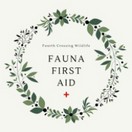Wildlife Resources

Bird Diet
Seed Eaters or Granivores
Granivores vary in appearance, but generally have short and stout beaks, strong and sharp enough to crush hard seed shells. The group includes birds such as Finches, Rosellas, Galahs, and Cockatoos. Natural food consists of seeds from native trees and shrubs such as eucalypts and wattles, grass seed, some grains, native fruit and berries.
Granivores vary in appearance, but generally have short and stout beaks, strong and sharp enough to crush hard seed shells. The group includes birds such as Finches, Rosellas, Galahs, and Cockatoos. Natural food consists of seeds from native trees and shrubs such as eucalypts and wattles, grass seed, some grains, native fruit and berries.
Insect Eaters or Insectivores
This group includes small birds with pointed beaks used for stabbing at insects. They include Wrens, Robins, Lyrebirds, Cuckoos, etc. Natural food includes moths, aphids, beetles, ants, spiders, caterpillars & worms and insect larvae.
Nectar and Pollen Eaters or Nectivores
Nectivores are small birds with long, slender and slightly curved beaks. They have a brush-tipped tongue which is used to extract nectar from flowers. The group includes birds such as Wattlebirds, Lorikeets and Noisy Miners. Natural food includes nectar and pollen from native flowers like bottlebrushes and grevillias. They also eat soft fruit, berries and some insects.
Meat Eaters or Carnivores
Carnivores are medium to large sized birds with very strong beaks needed for crushing bone and hard insects. This group includes Kookaburras, Butcherbirds, and Birds of Prey such as Eagles, Hawkes, Falcons, etc. Carnivores eat whole animals and insects, including bones, fur and feathers. Raw meat alone is an inadequate diet as it does not include calcium and other minerals and vitamins essential to the birds diet. Natural food includes mice, lizards, small birds and mammals, worms, grasshoppers, cicadas, etc. Larger birds of prey such as the Wedge-tailed Eagle eat carrion, rabbits, rats, etc.
Meat, insects, seed & fruit Eaters or Omnivores
Omnivores are medium to large sized birds with strong beaks similar to Carnivores. Birds in this group include Magpies, Choughs and Currawongs. They eat a very varied diet which consists of insects, lizards, some seeds and fruit.
Grass Eaters or Herbivores
Herbivores are waterfowls such as ducks, swans, geese, etc. They have short, broad beaks for sifting through mud and water. Natural food includes grasses and herbs, aquatic vegetation and grass seeds. Herbivores also eat insects.
Fruit Eaters or Frugivores
These are medium sized birds with solid, deep beaks. They include bowerbirds, orioles and some doves. Natural food consists of native fruits, berries and some insects.
Fish Eaters
This group is quite varied and includes seabirds and inland waders. Seabirds have long and solid beaks used for scooping up food. They include pelicans, penguins and albatrosses. Natural food includes whole fish, squid and crustaceans. Inland waders such as herons, brolgas and plovers have very long beaks which they use to poke into mud in the search of food. Natural food consists of insects, small fish, frogs, worms and snails.
This group is quite varied and includes seabirds and inland waders. Seabirds have long and solid beaks used for scooping up food. They include pelicans, penguins and albatrosses. Natural food includes whole fish, squid and crustaceans. Inland waders such as herons, brolgas and plovers have very long beaks which they use to poke into mud in the search of food. Natural food consists of insects, small fish, frogs, worms and snails.
This information is adapted from "Caring for Australian Wildlife" by Sharon White, which can be purchased through Australian Geographic stores.



